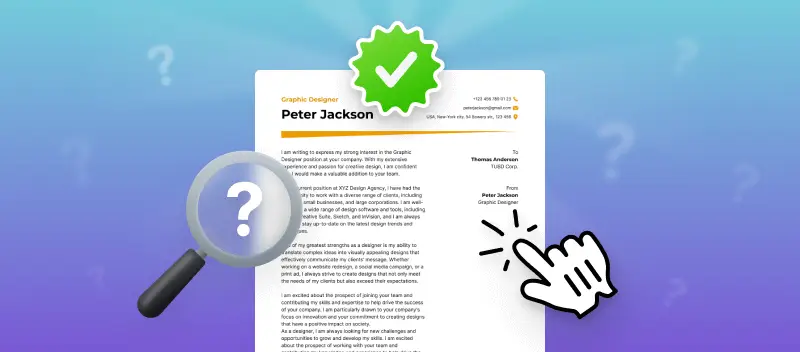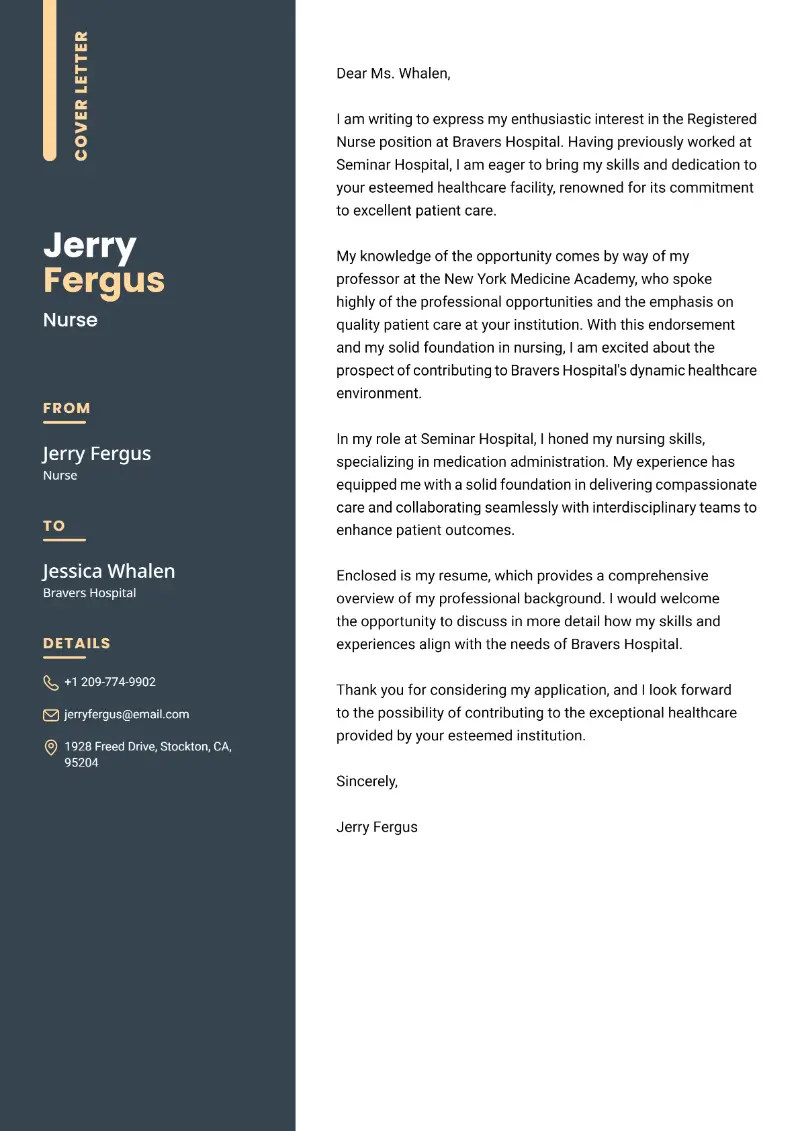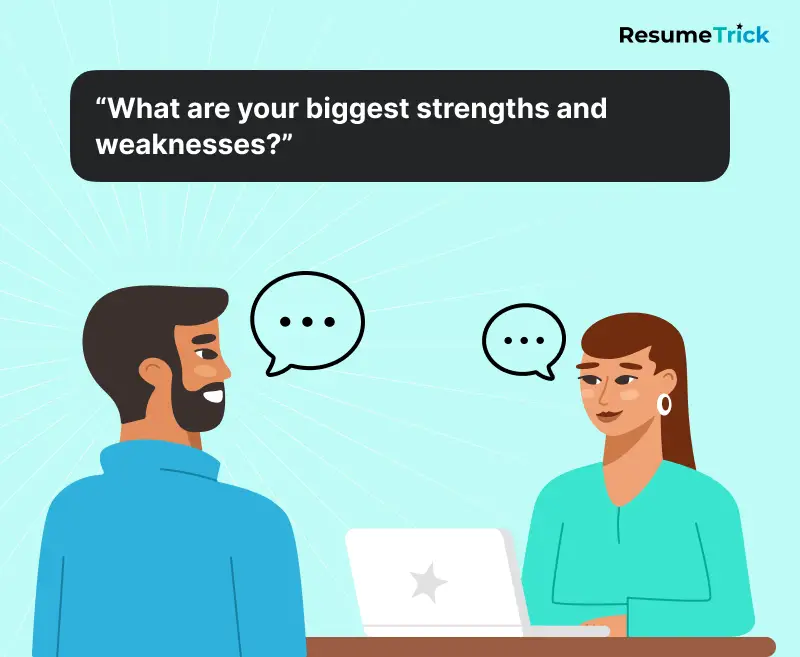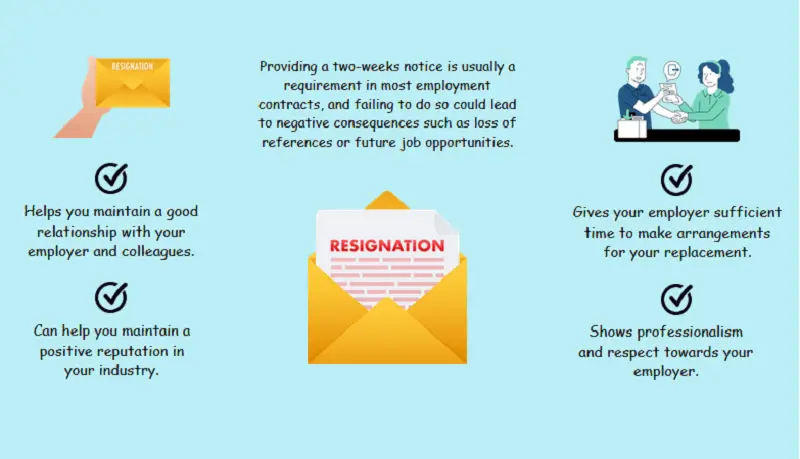Are you applying for a new job or internship and need to know how to write a cover letter? Although writing a cover letter may appear daunting, it doesn't have to be!
Your resume outlines your experience, but a cover letter adds a personal touch, giving you the chance to showcase your personality and convey your enthusiasm for the position.
Whether you need a general template or advice for different industries, this guide will give you the tools and confidence to navigate the cover letter writing process.
Let's dive in and uncover the secrets to creating a cover letter that opens doors to exciting career opportunities.
What is a Cover Letter
A cover letter is a document that goes along with your resume when seeking employment. It introduces you to the hiring manager and highlights your skills and experiences that make you a good fit for the job.
It's an opportunity to express yourself beyond what's on the resume, describe why the job appeals to you, and show how your qualifications and background can be of use.
After School Teacher Cover Letter Template
A CareerBuilder survey found that 49% of hiring managers believe a cover letter can positively impact a candidate's chances of being hired.
Types of Cover Letters
It's helpful to know how to write a cover letter and the types of cover letters available. Here are the seven main types of letters:
| Type | Description |
|---|---|
| Traditional Cover Letter. | This type of cover letter is exactly what it sounds like - traditional. It's great for jobs that require a more structured and formal tone. Begin with your contact data, followed by the date, then the info of the interviewer. Advertise yourself and elaborate on why you have a desire for the role. Describe your skills and experiences, and don't forget to thank the hiring managers for their time. |
| Creative Cover Letter. | When applying for artistic roles, such as those in advertising or design, you will want to show off your creativity. Use strong language to demonstrate your dedication and highlight your unique mastery. At the same time, make sure you are still professional and respectful in your approach. |
| Cold Contact Cover Letter. | Create a cover letter to send to a potential employer without them having advertised for a position. Demonstrate your knowledge of the employer and how your skills fit their needs. |
| Referral Cover Letter. | In this case, someone has referred you to the role. Mention the referral in your opening line and explain what their connection to you is. Then, provide evidence of why you would be a great fit for the job. |
| Networking Cover Letter. | This kind of cover letter is employed when applying for positions through networking. This letter should include details about how and where you met the contact and what was discussed during the conversation. |
| Transferable Skills Cover Letter. | In this type, focus on hard skills from previous occupations that make you suitable for the job. Show what advantages these skills can offer and explain transitions in your career trajectory or why you're seeking to enter a new sector. |
| Follow-up Cover Letter. | If you already applied for a job or had an interview but haven't heard back yet, a follow-up letter can help remind them of your interest in the role and get back on their radar! Don't be too pushy. Just ensure you thank them for their time and express how excited you are to join their team if selected. |
How to Write a Cover Letter
A cover letter builder can be a great resource for those searching to write a fascinating application papers. It eliminates the guesswork from producing an impressive and unique cover letter.
Constructing a cover letter with a builder is easy and efficient:
- All you have to do is enter in your information. The builder will generate a cover letter example comprising all of this information in a concise format.
- The service also allows you to customize your papers with specific words or phrases that are relevant to the job. This makes it easier to tailor your letter and make it stand out from other applicants.
- Another great feature of many cover letter builders is the ability to save and print your document. Make changes or update your letter when necessary. You can also store multiple versions of your letters so you have them on hand when needed.
Overall, using a builder is an excellent way to write a cover letter that will get you noticed by potential employers. With the right online builder, you can create the perfect document.
Create your professional Cover letter in 10 minutes for FREE
Build My Cover Letter
What to Include in a Cover Letter
A supporting letter is a crucial piece for any job application. It should provide insight into your background and experience.
Essential elements of writing a cover letter:
- Your contact information: Start with a name, address, phone number, and email. This ensures that employers can easily contact you.
- The job title: Make certain to specify the role title which you are applying for.
- Introduction: Commence your letter with a polite greeting and introduce yourself. Define your motivation and how your abilities can benefit the company.
- Experience: Underline key experiences that relate to the job description. Showcase relevant achievements or projects that you've completed.
- Motivation: Illustrate why you are the best-suited applicant for this role. Express excitement for the position and demonstrate how it fits into your career plan.
- Closing remarks: Conclude by requesting an interview or meeting. Acknowledge the time they gave you and reiterate your desire for the role.
- Professional Tone: Maintain a formal, respectful language throughout the letter. Avoid slang, ensuring the communication demonstrates your seriousness about the role.
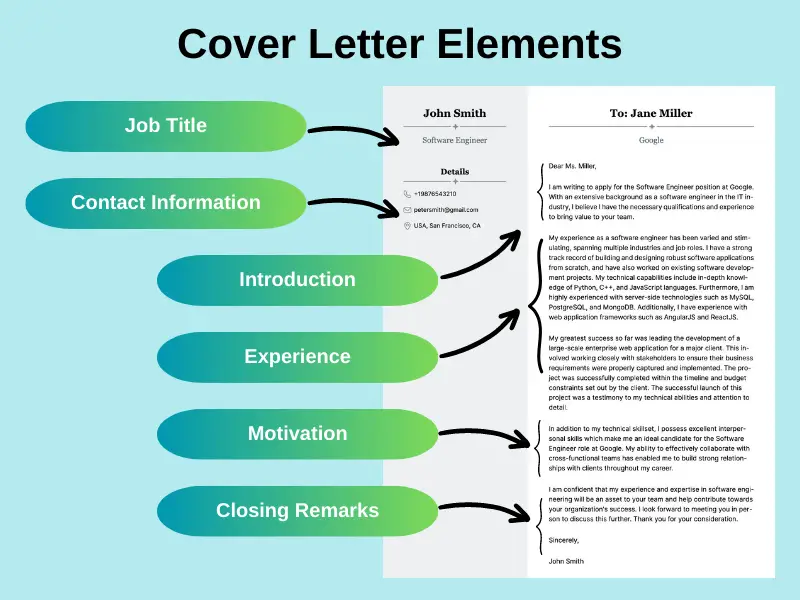
These are some of the key components of creating a successful cover letter. Crafting an outstanding accompanying letter can be an important step towards getting hired. Make sure to spend the necessary time creating one that is tailored to the opportunity and displays your unique qualifications!
Let's take a closer look at how to write a good cover letter.
Step 1. What to Write About
Before you even start making cover letter, do your analysis. Find out as much as you can about the company you are applying to and the job itself.
- Make sure you know the company's mission statement and values, and how they match your own. It is also important to read up on any recent press releases or news stories.
- Once you have gathered enough information, customize your letter to the company, job and hiring manager. Show that you understand their needs and what they are looking for in a candidate.
- It is also essential to read the job specification carefully. Jot down any desired capacities or qualifications that prove your experience and remember to mention them in your letter.
- Finally, use language that shows you have done your analysis. Include words related to the work culture and operate examples from your past that match firm demands. Doing so will demonstrate that you are a knowledgeable, enthusiastic competitor who is well-suited for the role.
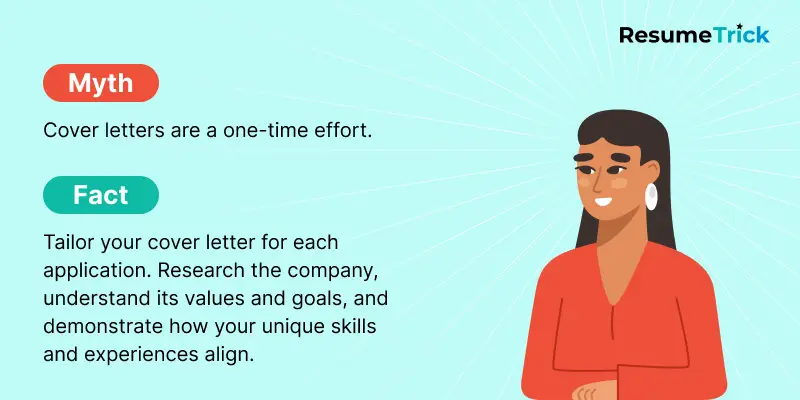
Step 2. Look Ahead
To make it easier, focus your cover letter structure on the future. You want to demonstrate to potential employers that you are a suitable contender for the job and you have a strategy in mind for how you will make a difference in their organization.
- Provide evidence that you have what it takes to do the job.
- Implement illustrations from past experience to demonstrate your skills and talents.
- Explain how hard and soft skills can benefit the organization and how they will help you achieve its goals in the future.
- Ensure you list certifications or accomplishments that distinguish you from other applicants.
- Align your career goals with the company’s mission and values.
By centering on how you can bid your competencies and prior knowledge to help them accomplish their aims, you can create an engaging cover letter that highlights your uniqueness.
Step 3. Contact details
How to start a cover letter? It's important to include your contact information in the letter first. This should comprise your full name, address, phone number, and email.
- Begin by typing your full name in bold, centered at the top of the cover letter header. This is the most important line, so make sure it stands out.
- Below that, incline your physical address. Include the city, state, or province and zip code.
- Finally, enter your contact details in this format: "(555) 555-5555" or "name@email.com". Employ a professional-sounding email address that includes some variation of your name.
- Tip: Attach your LinkedIn profile or website if applicable.
Step 4. Cover Letter Intro
Continue writing a cover letter by addressing the person responsible for hiring directly. This shows them that you are serious about the position and conducted your investigation.
- Start making a cover letter with a formal salutation, such as "Dear [Name]", or "To [Name]", followed by a colon. If you don't know the name of the HR, you may handle a generic greeting such as, "Dear Hiring Manager", or "To Whom It May Concern".
- Don't leave the reader guessing your identity and purpose for composing. After your greeting, provide context by briefly introducing yourself and outlining the reasons why you are keen to join the role.
- If you have been referred to the company by someone else, remember to point out it as well. This can give your application an edge over other job-seekers and show that you have professional connections in the industry.
- Hook the reader with a compelling opening sentence. Use a brief, attention-grabbing statement that highlights a unique qualification to immediately show your value.
Nurse Cover Letter Example
Step 5. Explain Your Enthusiasm
What should a cover letter say? It is essential to express your enthusiasm for the firm you are applying to. Featuring your drive to join the company can make the difference between getting a job interview and having your application overlooked.
- When creating a cover letter tell why you'd be a great addition to the team. For example, if you have experience in the same industry, or have completed a pertinent course, use this knowledge to your advantage. Make sure to emphasize how your qualifications match those of the job vacancy.
- Don't forget to mention any awards or recognition. Any recognition of your hard work demonstrates to prospective employers that you possess great capability and strong determination to succeed.
By highlighting your ability to fit into their organization and contribute immediately, employers will be impressed with your enthusiasm and commitment. Make sure that after reading the cover letter, employers know why they should hire you!
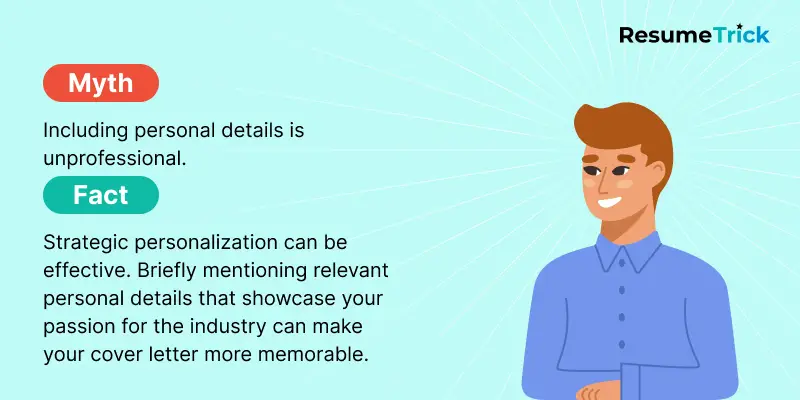
Step 6. Support Your Credentials
What else to include in a cover letter? It's important to back up your claims about your qualifications with specific examples and numbers. Illustrating how you have proven yourself in the past is a good strategy to convince probable bosses that you are the appropriate individual for the job.
Here are some strategies on how to accomplish this effectively:
- Using a cover letter sample for inspiration describe the scope of work you have done.
- If possible, quantify your accomplishments.
- Detail the results of any projects you have worked on.
- Talk about any special skills or knowledge you have acquired that will be useful in this job.
By providing concrete evidence of your qualifications in the form of illustrations and figures, you can dramatically advance the impact. It's easy to make big claims - but it's much more convincing when you can back them up with facts!
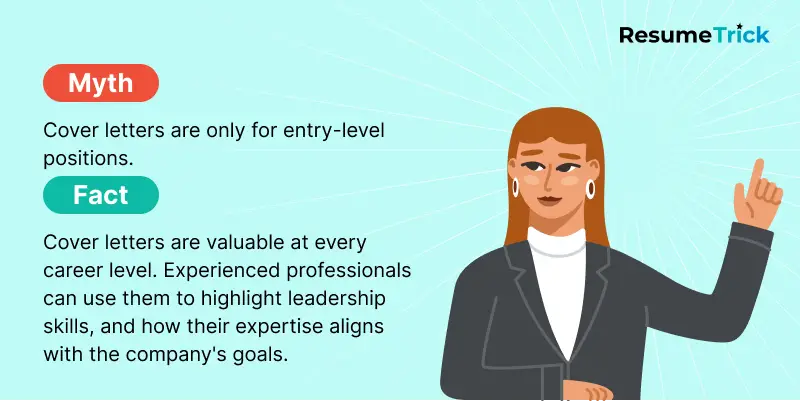
Step 7. Watch the Tone
Tone of cover letter structure matters. The quality of the cover letter template and the choice of words can have a great influence on whether or not you receive an interview.
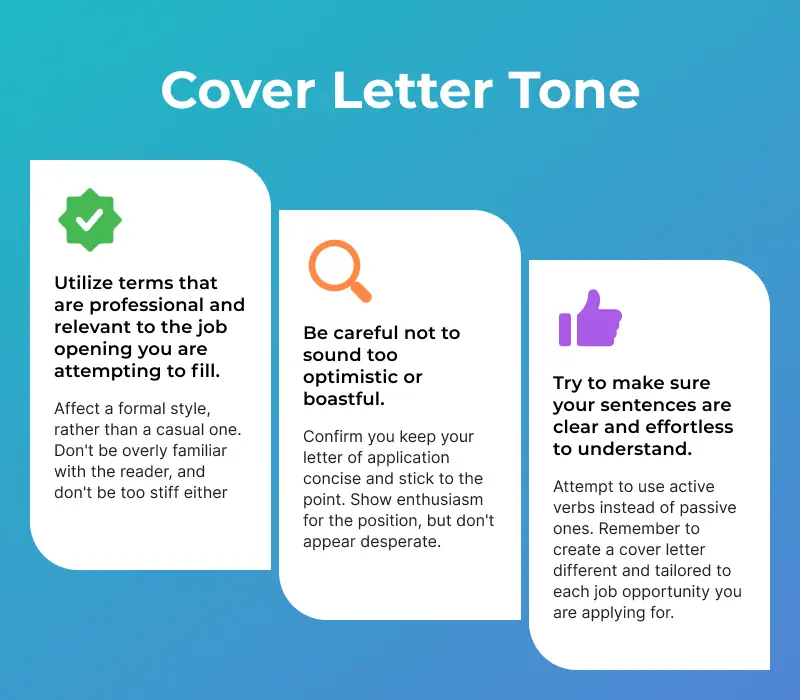
- Utilize terms that are professional and relevant to the job opening you are attempting to fill. Affect a formal style, rather than a casual one. Don't be overly familiar with the reader, and don't be too stiff either.
- Be careful not to sound too optimistic or boastful. Confirm you keep your letter of application concise and stick to the point. Show enthusiasm for the position, but don't appear desperate.
- Try to make sure your sentences are clear and effortless to understand. Attempt to use active verbs instead of passive ones. Create a cover letter different and tailored to each job opportunity.
Pay attention to spelling and grammar mistakes as these could put off potential employers. Double-check the cover letter for typos before handing it in!
Step 8. Strong Conclusion
A cover letter needs to have a powerful closing statement. It's the last thing your reader will see and should leave a lasting impression.
- Commence with an appreciation of the reader for devoting their time and consideration. Show that you appreciate their efforts to consider you as a candidate.
- Make a cover letter call to action, inviting the reader to contact you to discuss your qualifications further or request an interview. Include your number or email address so they can get in touch quickly and easily.
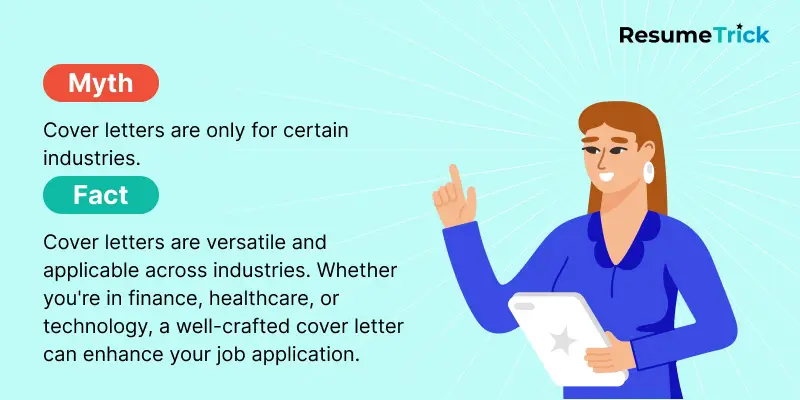
Remember to tailor these suggestions to fit the specific context of your cover letter and the job you are applying for. The goal is to create a sense of urgency and enthusiasm, prompting the reader to take action and move your application forward.
Step 9. Cover Letter Closing Salutation
A formal ending salutation should be used every time.
Start with "Sincerely", and add your name after it. This will assure it is professional and respectful. Avoid using phrases that are too casual, such as "Take care" or "Talk soon". Verify you employ the same name that you applied on the header.
You can also write a cover letter postscript (P.S.). This should be a short sentence that reiterates that you are the perfect match for the position. It can emphasize some of your best qualities and experiences.
Architectural Engineer Cover Letter Example
Write a Cover LetterLinkedIn reports that candidates who include a cover letter with their application are 3 times more likely to receive an interview.
Step 10. Improve the Cover Letter
Once you have written the cover letter, it is important to take time to reread and revise it. Make sure that all your points are clear and concise. Check for grammar, spelling, and punctuation errors. Ensure that the view of the letter is appropriate.
- Look for any areas where you can enhance or make the letter more succinct. Contemplate if there are any points that need further explanation or could be clarified. Eliminate any words or phrases that don't give value to your message.
- Review the job description again to make sure that you addressed all requirements in your letter. Double-check the company name and contact information if you included them in your letter.
With a few modifications, you can write a superior cover letter that will set you apart from the rest.
Step 11. Get Feedback
When finished making a cover letter, get feedback from a friend or colleague. It is beneficial to acquire an outside opinion so you get a better understanding of how to write a perfect cover letter.
They can help you identify any grammar and spelling errors. Plus, they can make certain that the cover letter is composed in a professional style.
- Make sure you ask for an honest response. You want to hear what the reviewer has to say. Don't take it personally if they suggest changes. If the individual has any experience in the job market, their advice can be especially helpful.
- If you don't have any friends or colleagues to provide a reply, there are other resources available. Professional resume writers offer cover letter critiques and direction. You can use websites like Indeed and Glassdoor to get guidance from the experts.
- Recite your cover letter aloud before submitting it. This will help you catch any awkward phrasing or errors that you might have missed. After reading the letter out loud, ask yourself if it makes sense and if it's written in a businesslike tone.
Getting feedback on your letter of application is essential. It helps guarantee that your writing is up to par and offers a fresh perspective on what you've written. So don't hesitate to reach out for help with the cover letter!
A study by TopResume found that 60% of recruiters and hiring managers would reject a candidate if their cover letter contained grammatical or spelling errors.
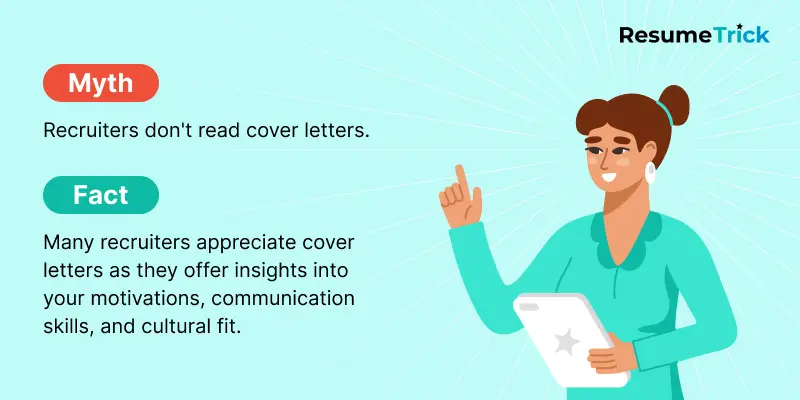
Non-Traditional Application Format
In cases where employers explicitly state that they do not accept cover letters or if the job application lacks a designated space for one, it is still beneficial to incorporate your cover letter into your application strategy.
Consider attaching a brief and impactful supporting letter as a separate document along with your resume. In your email or application submission, express your understanding of their preferred application format and briefly state your enthusiasm for the position.
Politely mention that you have attached a cover letter that highlights your qualifications and genuine interest in the role. This proactive approach ensures that the hiring team has the opportunity to review your comprehensive application package while respecting their specified application guidelines.
Yahoo Finance found that 74% of employers believe that a well-written cover letter can increase a candidate's chances of being selected for an interview.
Cover Letter Tips
Nothing will get your cover letter thrown in the recycling bin faster than giving the wrong company name.
What not to do:
- Don't use a generic pre-written template of a cover letter. It's important to be tailored specifically to the role you're applying for.
- Don't repeat the same information from your resume when writing a cover letter. It should involve additional evidence as to why you are the ideal match for the role.
- Don't focus solely on your qualifications and skills. Companies don't only care about what you can do; they want to know why you want the job and how you can add value.
- Don't utilize a impersonal greeting; try to find out who the hiring manager is and address them directly.
- Don't make spelling and grammar mistakes. Read the cover letter carefully before sending it and ask someone else to proofread it too.
- Don't go over one page in length. Keep the letter concise and no longer than a single page.
- Don't use jargon or overly complicated language. The cover letter should be easy to read and understand, so escape using too technical words that might confuse the reader.
- Don't include information that isn't relevant. Make sure that you don't incline any information that doesn't add anything to your application. As it could potentially damage your chances of getting hired.
By avoiding these common mistakes when composing the cover letter, you'll be able to present yourself in the best feasible light and have a better chance of getting an interview!
Questions to guide you through the writing process:
- What do I know about the firm? Research the job and company to recognize vital abilities and characteristics desired in an applicant.
- What value can I bring to the occupation? Showcase any special qualifications or experiences that you believe make you a standout among other applicants.
- How can I show enthusiasm and interest in the role? Demonstrate your passion by focusing on the company's goals and how your skillset can help them attain those.
- What other information should I include? Consider adding a few admissible accomplishments, an example of your work, or a link to your online portfolio.
- Who will be reading my cover letter? Address the letter to an individual if possible, such as the hiring manager or recruiter.
- What tone suits this industry? Adjust your writing style to reflect the company's culture—opt for formal and polished language in traditional sectors, or a more approachable tone for creative environments.
By inquiring about these queries and utilizing them as a reference, you can write a persuasive cover letter that calls the attention of the other job-seekers.
Make a Cover Letter for FreeChecklist
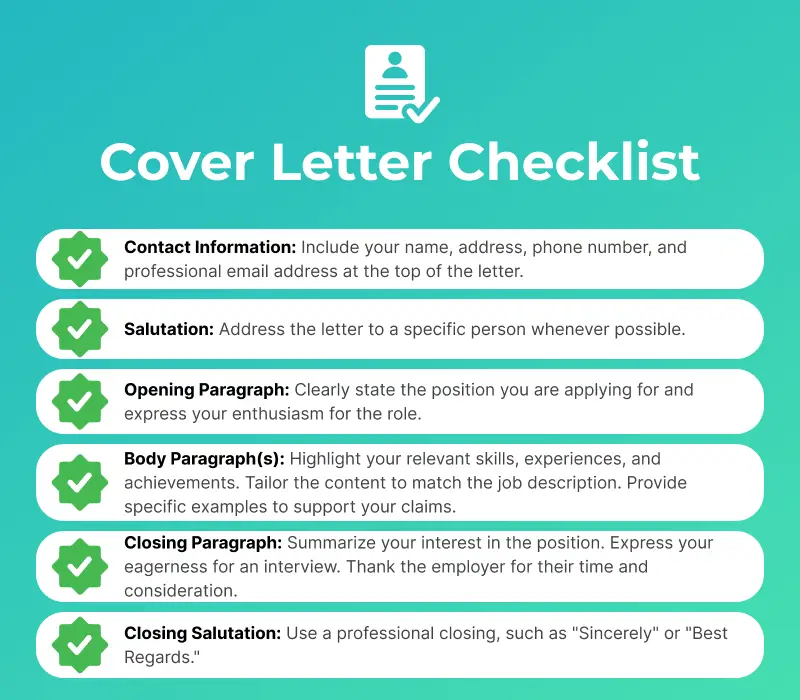
Cover Letter Templates
Cover Letter Example
From: Kevin N. Bowers
4425 Lang Avenue
Delta, UT 84624
Email: kevinbowers@email.com
Phone: +1 454 864 6956To: Mr. Bradley
City AcademyDear Mr. Bradley,
I am writing to express my interest in the position of Acting Teacher at City Academy, as advertised on your website. With a background in acting and a passion for teaching, I am excited about the opportunity to contribute to your esteemed institution.
My journey into teaching has been driven by a deep-seated enthusiasm for both the art form and the transformative impact it has on students. Having spent several years as an actor, I developed a profound understanding of the craft and its nuances. Transitioning into education feels like a natural progression where I can impart my practical knowledge and experiences to aspiring actors.
Throughout my career, I have honed my communication skills, patience, and adaptability—qualities essential for effective teaching. I am adept at creating a supportive and engaging learning environment where students feel encouraged to explore their creativity and develop their talents.
My approach combines practical exercises with theoretical knowledge, ensuring a well-rounded education that prepares students for the challenges of the industry.
At Branson Theater, where I was involved in mentoring and guiding individuals at various skill levels, I gained valuable experience that has prepared me well for a teaching role. Additionally, I have obtained teaching certificates that validate my qualifications and commitment to excellence in education.
I am particularly drawn to City Academy because of its reputation for nurturing talent and its commitment to providing comprehensive training in acting. I am eager to bring my unique perspective as a former actor to your esteemed faculty, contributing to the growth and success of your students.
Enclosed is my resume, which provides additional details about my qualifications and experiences. I would welcome the opportunity to further discuss how my background, skills, and enthusiasm for acting education align with the goals of City Academy.
Thank you for considering my application. I look forward to the possibility of discussing how I can contribute to your team.
Sincerely,
Kevin N. Bowers
Entry-Level Cover Letter Sample:
From: Maria R. Croxton
San Diego, CA 92117
Email: maria.croxton@gmail.com
Phone: +1 256 378 2589To: Salesforce
Dear Ms. Johnson,
I am writing to express my interest in the Junior Marketing Assistant position at Salesforce, as advertised on your website. I recently graduated from the University of California. I am eager to apply my skills in digital marketing, customer engagement, and data analysis to contribute to Salesforce's ongoing success.
During my time at UCSD, I completed coursework in digital marketing, which allowed me to develop a strong foundation in crafting marketing strategies.
In addition to my academic achievements, I gained hands-on experience as a marketing intern for a local startup, where I assisted in executing social media campaigns and analyzing customer data. This experience enhanced my ability to work with marketing tools like Google Analytics and social media platforms to increase brand visibility and customer interaction.
I am particularly drawn to Salesforce because of your commitment to innovation and your dynamic approach to customer relationship management. I admire your dedication to helping businesses grow through technology, and I am excited about the opportunity to contribute to such an impactful and industry-leading company.
I am confident that my attention to detail, strong communication skills, and eagerness to learn make me a great fit for this position. I would love the opportunity to further discuss how I can contribute to the marketing team at Salesforce. Thank you for considering my application. I look forward to hearing from you.
Sincerely,
Maria R. Croxton
Follow-up Strategies
Following up after submitting your cover letter and resume is an important step in the job application process. It shows your continued interest in the position and can help keep you top of mind with hiring managers.
- Wait at least one week. Give the employer at least a week to review your application. If the job posting specified a timeline for the hiring process, wait until that period has passed.
- Second follow-up. If you don’t hear back after your first email, wait another one to two weeks before sending another one. After the second follow-up, it’s best to move on and continue your job search.
- Keep it brief. Your follow-up email should be concise and to the point. Hiring managers are often busy, so a short message is more likely to be read and appreciated.
- Reiterate your interest. Reinforce your interest in the position and the company. Briefly mention any key points that make you a strong candidate.
- Contact information. Make it easy for the hiring manager to reach you by including your phone number and email address.
First follow-up email sample
Subject: Follow-Up on Marketing Coordinator Application
Dear Mr. Johnson,
I hope this message finds you well. I recently applied for the Marketing Coordinator position at GreenTech Solutions and wanted to follow up to express my continued interest in this opportunity.
I am very enthusiastic about the possibility of joining your team and contributing to your innovative marketing campaigns. With my background in digital marketing and social media strategy, I believe I can bring valuable expertise to your organization.
Thank you for considering my application. I look forward to the possibility of discussing how my skills and experiences align with the needs of your team. Please let me know if you require any additional information from my end.
Best regards,
Jessica Smith
(123) 456-7890
jessica.smith@example.com
Second follow-up email example
Subject: Second Follow-Up on Marketing Coordinator Application
Dear Mr. Johnson,
I hope this email finds you well. I am writing to follow up once again regarding my application for Marketing Coordinator at GreenTech Solutions. I am very eager to bring my experience in content creation and SEO optimization to your team and contribute to your upcoming product launch.
I understand you may be very busy, but I wanted to reiterate my strong interest in this role and in working with your esteemed organization. If there are any updates on the status of my application or if further information is needed, please feel free to contact me.
Thank you once again for your time and consideration. I look forward to the possibility of contributing to GreenTech Solutions.
Best regards,
Jessica Smith
(123) 456-7890
jessica.smith@example.com
Create your professional Cover letter in 10 minutes for FREE
Build My Cover Letter
How to Write a Cover Letter: Bottom Line
By following a few simple steps, you can create a well-crafted letter that will give you an edge over the competition.
Take the time to make your cover letter unique and engaging. Use it to highlight your skills and qualifications. Showcase your enthusiasm for the role and include examples of how you have excelled in similar positions.
With these tips in mind, you can compose an effective and professional cover letter that will bring you one step closer to being hired.
Create your professional Resume in 10 minutes for FREE
Build My Resume
